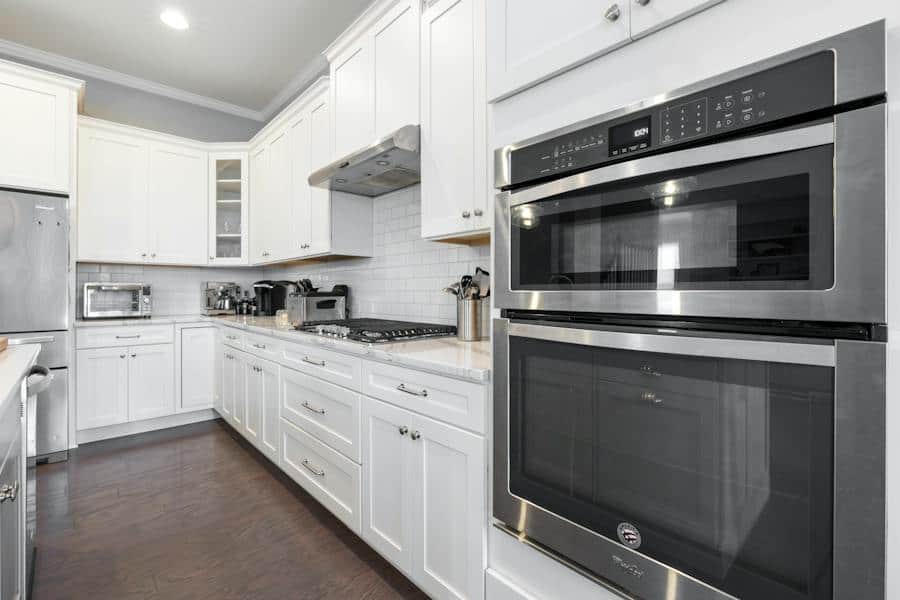In modern kitchens, the terms “toaster oven” and “convection oven” are often used interchangeably, leading to consumer confusion. Many wonder if these appliances are the same, but in reality, they serve distinct purposes and offer unique features. To clear up the confusion, this article delves into the world of toaster and convection ovens, exploring their characteristics, functions, and the key differences that set them apart. By the end, you’ll have a clear understanding of whether a toaster oven is, in fact, a convection oven and which one might be the right choice for your culinary needs.
Is A Toaster Oven A Convection Oven?
No, a toaster oven is not necessarily a convection oven, although some ovens have a convection feature. A convection oven is designed with a fan and exhaust system that circulates hot air, ensuring even cooking. On the other hand, a standard toaster oven primarily uses radiant heat to cook. However, some toaster ovens have a convection fan, allowing them to function like a mini convection oven. It’s essential to check the specific features of the toaster oven in question to determine if it has convection capabilities.
Toaster Oven Basics
Toaster ovens are versatile kitchen appliances designed for a variety of cooking tasks. Here are some toaster oven basics:
Size And Design: Toaster ovens come in various sizes, from compact models suitable for small kitchens to larger units with multiple cooking racks. They typically have a front-opening door, a timer, temperature control settings, and various cooking functions.
Functionality: Toaster ovens can perform various cooking functions, including toasting bread, baking, broiling, roasting, and even reheating leftovers. They are known for their ability to handle a wide range of tasks, making them a versatile addition to any kitchen.
Common Uses: Toaster ovens are used for toasting bread and bagels, reheating pizza or other leftovers, baking small batches of cookies or muffins, broiling steaks or fish, and cooking small casseroles or roasted vegetables.
Key Features: Some critical features of toaster ovens include adjustable temperature settings, a timer with a bell or automatic shut-off, a removable crumb tray for easy cleaning, and cooking presets for specific food items like pizza or frozen snacks.
Pros And Cons: Toaster ovens are praised for their versatility, energy efficiency (compared to traditional ovens), and quicker preheating times. However, they may have limited capacity for larger dishes, and their cooking times can be longer than a full-sized oven for specific recipes.
Convection Oven Basics
Convection ovens are a popular choice in many kitchens due to their unique cooking method and versatility. Here are some basics about convection ovens:
Definition:
A convection oven is an oven that uses a fan and exhaust system to circulate hot air throughout the cooking chamber. This constant air movement allows for even and consistent cooking, making it ideal for various dishes.
Size And Design:
Convection ovens come in various sizes, from countertop models to built-in wall ovens. They typically have a digital control panel for setting the temperature and cooking time, along with racks or shelves for placing food.
Functionality:
The primary function of a convection oven is to bake and roast food. The fan inside ensures that hot air is distributed evenly around the food, which leads to quicker cooking times and more uniform results. Convection ovens are particularly well-suited for baking pastries, roasting meats, and preparing dishes that require precise and consistent heat.
Key Features:
Critical features of convection ovens include a convection fan, adjustable temperature settings, a timer with an automatic shut-off feature, and often various cooking modes such as bake, roasting, and broiling. Some advanced convection ovens also offer steam cooking capabilities for added versatility.
Pros And Cons:
Convection ovens excel at providing even cooking and reducing cooking times, which can save energy. However, they can be more expensive than traditional ovens, and the fan may require maintenance over time. Additionally, it’s essential to follow recipes and cooking instructions designed for convection ovens to achieve the best results.
Choosing The Right Appliance For Your Needs
Choosing the right appliance between a toaster oven and a convection oven depends on various factors, each tailored to your specific needs and kitchen setup. Here’s a detailed exploration to help you make an informed decision:
Consider the size and layout of your kitchen. If you have limited counter space or a small kitchen, a compact toaster oven might be the better choice. On the other hand, if you have ample space or are planning a kitchen renovation, a built-in or standalone convection oven might be a more fitting option.
Assess your cooking requirements. Toaster ovens are excellent for simple tasks like toasting bread, reheating leftovers, and baking small cookies. They are convenient for everyday cooking needs. However, if you often cook larger meals, roast meats, or bake multiple dishes simultaneously, a convection oven’s larger capacity and even cooking capabilities could be indispensable.
Consider your budget. Toaster ovens are generally more budget-friendly than convection ovens, which can be quite an investment. If cost is a significant factor, evaluate your cooking needs and whether a toaster oven can fulfill them adequately.
Think about the variety of dishes you like to prepare. Toaster ovens offer versatility, handling various tasks from toasting to baking and broiling. Convection ovens, while great for baking and roasting, might be less versatile for everyday tasks like toasting.
Consider energy efficiency. Toaster ovens are known for quicker preheating times and reduced energy consumption compared to full-sized convection ovens. If you want to save on energy bills, a toaster oven may be the most economical.
Evaluate the special features you desire. Some toaster ovens have convection capabilities, blurring the lines between the two appliances. If you want the benefits of convection cooking in a smaller appliance, this could be a compelling option.
Final Words
In the ongoing debate of “Is a toaster oven a convection oven?” it’s essential to remember that while some toaster ovens come equipped with convection capabilities, they are not inherently the same as traditional convection ovens. Each appliance serves its unique purpose and caters to distinct cooking needs. Toaster ovens are versatile and space-saving, making them suitable for everyday cooking tasks and smaller-scale recipes. They are the go-to choice for toasting, baking small batches, and reheating leftovers efficiently.
FAQ’s
What’s The Primary Difference Between A Toaster And A Convection Oven?
The main difference is that convection ovens have a fan and exhaust system that circulates hot air for cooking. In contrast, toaster ovens primarily use radiant heat for toasting, baking, and broiling. Some toaster ovens have a convection feature, blurring the lines between the two.
Can I Use A Toaster Oven For All The Same Tasks As A Convection Oven?
Toaster ovens are versatile but may not perform as effectively as convection ovens for tasks like roasting large meats or baking delicate pastries. Convection ovens are better suited for these purposes.
Can I Bake In A Toaster Oven Like A Regular Oven?
Yes, you can bake in a toaster oven. They are suitable for baking small batches of cookies, muffins, or even a small pizza. However, for large-scale baking, a convection oven or traditional oven may be more practical.





















